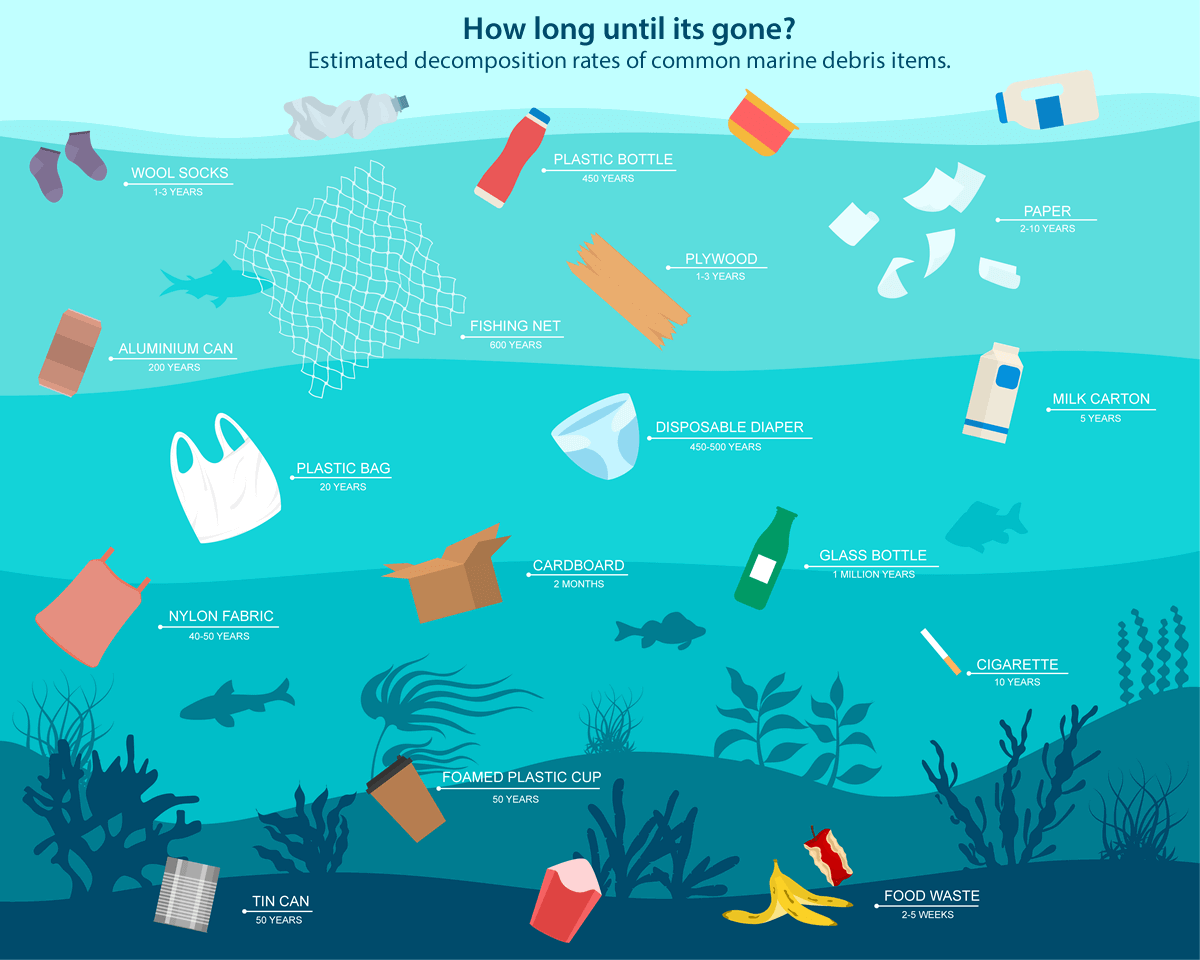How Long Does It Take Plastic to Decompose?
by Cheap Cheap Team
Friday June 7th 2024

Plastic is integral to modern life, from packaging to everyday household items. However, its environmental impact is a significant concern, primarily due to its longevity in the environment. Did you know that over 8 million tons of plastic enter our oceans every year, threatening marine life and ecosystems? Understanding how long plastic decomposition takes is crucial for addressing this pollution and developing sustainable practices.
Types of Plastics and Their Decomposition Times
Plastic is not a single entity but a category of materials, each with varying decomposition rates based on its chemical structure and environmental conditions.
- Plastic Bags: Commonly made from high-density polyethylene (HDPE), plastic bags are a staple in grocery stores and households worldwide. They can decompose for up to 20 years, breaking down into smaller pieces, called microplastics, which persist in the environment.
- Plastic Bottles: Made from polyethylene terephthalate (PET), plastic bottles can decompose for up to 450 years. PET is highly resistant to breaking down, making it one of the most persistent forms of plastic waste.
- Plastic Straws: Typically made from polypropylene, plastic straws can take around 200 years to decompose. Due to their small size and lightweight, they often escape recycling processes and end up in oceans, harming marine life.
- Plastic Cutlery: Disposable forks, spoons, and knives, also made from polypropylene, can take approximately 450 years to break down, posing a long-term threat to our wildlife and delicate ecosystems.
- Plastic Microbeads: microbeads are tiny pieces of polyethylene Found in some personal care products; although small, they can persist in the environment for centuries, contributing to the ocean's microplastic problem.
4 Environmental Factors Influencing Decomposition
The decomposition rate of plastic varies significantly based on several environmental factors:
Exposure to Sunlight: Ultraviolet (UV) radiation from the sun can break down plastic polymers through photodegradation. However, this process is slow and only affects plastic exposed to sunlight.
Temperature and Humidity: Higher temperatures and humidity can accelerate the breakdown of certain plastics, but this is still a prolonged process compared to organic materials.
Presence of Microorganisms: Some microorganisms can degrade plastic, but they are not widespread, and the process is generally slow and inefficient for most types of plastic.
Mechanical Wear: Physical forces such as wind, waves, and abrasion can break plastic into smaller pieces, but this does not equal true decomposition, as the plastic remains in the environment as microplastics.
The Problem with Microplastics
As larger pieces of plastic break down, they form microplastics—tiny particles less than 5 millimetres in size. These microplastics are particularly problematic because:
- They are ingested by marine and terrestrial animals, entering the food chain.
- They can absorb and concentrate harmful pollutants, such as pesticides and heavy metals, which can then be ingested by wildlife and humans. These pollutants can accumulate in our bodies over time, potentially leading to health issues. This is why it's crucial to address the issue of microplastics in our environment.They are tough to remove from the environment once dispersed.
Solutions and Alternatives
Addressing plastic pollution requires a multifaceted approach:
- Reducing Use: Minimizing the use of single-use plastics and opting for reusable items can significantly reduce plastic waste.
- Recycling: Effective recycling programs can help manage plastic waste, although not all plastics are easily recyclable. For instance, while PET plastic bottles are widely recyclable, plastic bags made from HDPE are not accepted in many recycling facilities, leading to their accumulation in landfills and the environment.
- Biodegradable Plastics: These are plastics that can decompose rapidly under natural conditions, potentially reducing their environmental impact. However, it's important to note that not all biodegradable plastics are created equal, and some may require specific conditions, such as high temperatures or industrial composting, to break down effectively.
- Legislation: Governments can implement policies to limit plastic production and encourage sustainable practices. For instance, the European Union has banned single-use plastics, such as plastic cutlery and straws, and introduced a 'polluter pays 'principle to hold plastic producers accountable for the environmental impact of their products.
Conclusion
Plastic decomposition is a slow process, taking decades to centuries, depending on the type of plastic and environmental conditions. The persistence of plastic in the environment poses serious ecological and health risks, emphasizing the need for urgent action in reducing plastic use, improving waste management, and developing sustainable alternatives.
By understanding the decomposition timelines of various plastics and taking individual steps to mitigate their impact, we can collectively move towards a cleaner, more sustainable future.
At Cheap Cheap Rubbish Removal, we are commited to a cleaner envirnoment. We sort & recycle plastics and other recylable Rubbish and Junk whever possible.









